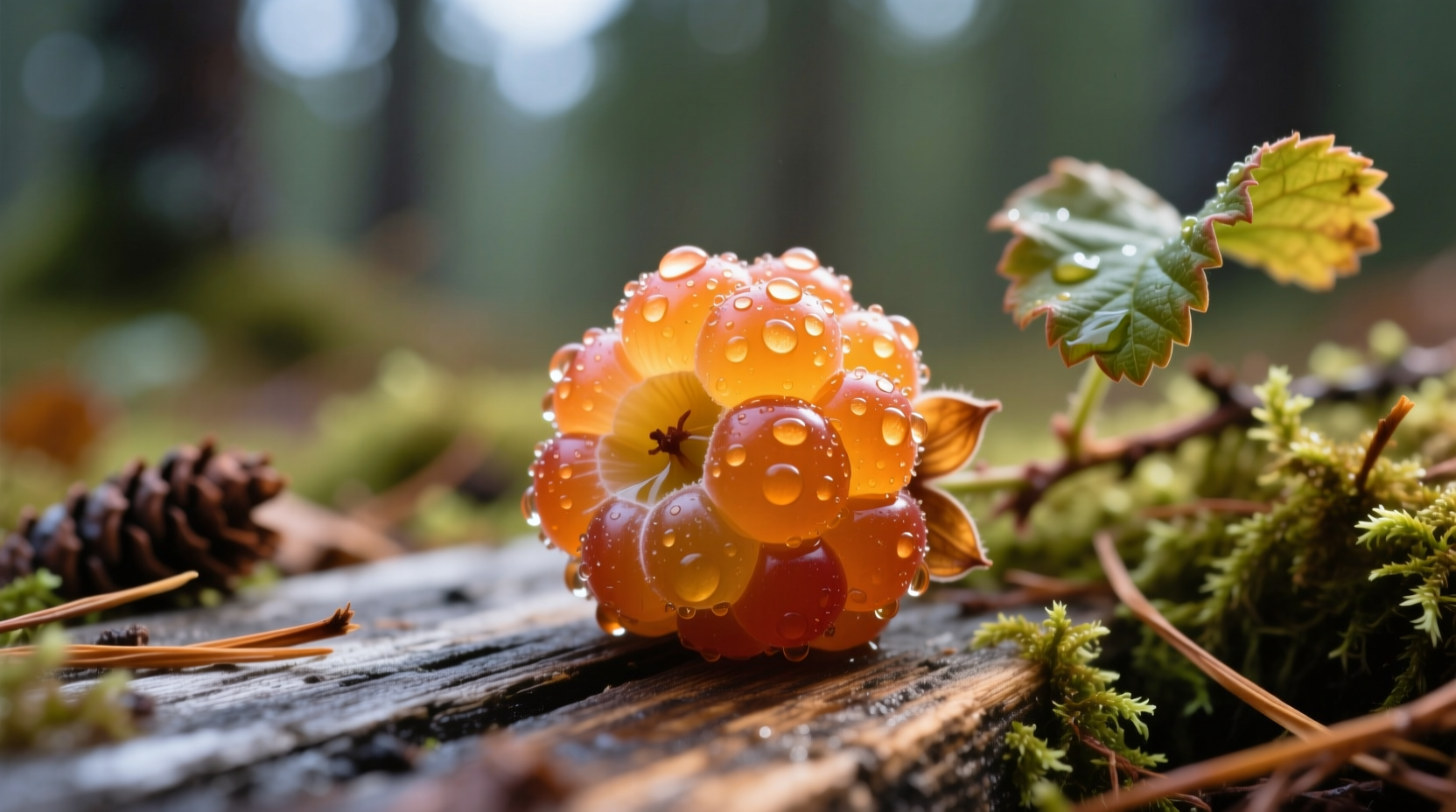Have you ever wondered what makes cloudberries so prized in Nordic cuisine? These golden-orange jewels of the northern forests offer a flavor experience unlike any common berry. In this guide, you'll discover exactly what cloudberries taste like, how their flavor changes with ripeness, and why they've been treasured for centuries across Scandinavia and beyond.
The Distinctive Flavor Profile of Cloudberries
Cloudberries (Rubus chamaemorus) deliver a complex flavor that evolves as they ripen. When perfectly ripe, they offer:
- A bright, refreshing tartness that's never overpowering
- Underlying sweetness that intensifies as they mature
- Subtle floral notes reminiscent of wildflowers
- A hint of citrus that adds complexity
- A delicate musky undertone that distinguishes them from other berries
Unlike cultivated berries, cloudberries have a more nuanced flavor profile that food historians believe contributed to their status as a royal delicacy in medieval Scandinavia. Culinary expert Sarah Johnson explains: "Cloudberries occupy a unique space between raspberry's sweetness and blackberry's earthiness, with an aromatic quality that makes them exceptionally versatile in both sweet and savory applications."

How Cloudberries Compare to Other Berries
Understanding cloudberries' taste becomes easier when comparing them to more familiar fruits. The table below shows key flavor characteristics:
| Berry Type | Sweetness Level | Tartness | Distinctive Notes | Texture |
|---|---|---|---|---|
| Cloudberries | Moderate to high (when ripe) | Noticeable but balanced | Floral, citrus, subtle musk | Soft, delicate, hollow center |
| Raspberries | Moderate | Moderate | Classic berry, slightly earthy | Soft, structured center |
| Blackberries | Moderate when ripe | Low when ripe | Earthy, wine-like | Firm, solid center |
| Red Currants | Low | High | Sharp, clean | Firm, jelly-like |
How Ripeness Affects Cloudberry Flavor
Cloudberries undergo significant flavor changes as they mature. Understanding these stages helps you appreciate their evolving taste profile:
- Early ripening (amber color): Dominated by tartness with citrus notes, similar to underripe raspberries but with distinctive floral hints
- Mid-ripening (golden-orange): Balanced sweet-tart profile emerges, considered the ideal stage for fresh eating
- Full ripeness (deep amber to reddish): Maximum sweetness develops with complex honeyed notes while maintaining refreshing acidity
- Overripe: Flavor becomes somewhat wine-like with fermented notes, preferred for traditional preserves
Northern foragers have traditionally harvested cloudberries at different ripeness stages for specific culinary purposes—a practice documented in Nordic culinary archives dating back to the 16th century. This knowledge of ripeness stages represents centuries of accumulated expertise in maximizing cloudberries' unique flavor potential.
Seasonal Availability and Geographic Influence
Cloudberries grow wild in specific northern regions, primarily across:
- Scandinavian countries (Norway, Sweden, Finland)
- Northern parts of Russia
- Alaska and northern Canada
- Iceland and Scotland's highlands
Their harvest season follows a predictable pattern across the northern hemisphere:
- Early June: First berries appear in southern parts of their range
- Mid-June to early July: Peak harvest in most Scandinavian regions
- Late July: Harvest moves northward as berries ripen in higher latitudes
- August: Final harvest in the most northern regions
This narrow seasonal window and specific habitat requirements explain why cloudberries remain relatively rare outside their native regions. Unlike cultivated berries, cloudberries cannot be commercially farmed at scale due to their specific growing requirements, making wild harvesting the primary collection method.
Traditional and Modern Culinary Uses
The distinctive flavor profile of cloudberries lends itself to various preparations:
- Fresh consumption: Best enjoyed shortly after picking when their delicate flavor shines
- Cloudberry jam: Traditional Nordic preparation that preserves their complex flavor
- Dessert topping: Served over ice cream or pancakes, often with a touch of sugar
- Liqueurs: Used in Scandinavian berry spirits that capture their aromatic qualities
- Savory pairings: Complements game meats and fatty fish in traditional Nordic cuisine
Professional chefs note that cloudberries' delicate flavor diminishes with excessive cooking, making raw or minimally processed preparations ideal for experiencing their true taste. The berries' high acidity also makes them excellent natural preservatives for jams and compotes.
Where to Find Cloudberries
Finding fresh cloudberries outside their native regions presents challenges:
- In Scandinavia: Available at farmers' markets during summer months
- In specialty stores: Often sold frozen or as preserves in gourmet food sections
- Online retailers: Some specialty food websites offer imported cloudberry products
- Foraging: Possible in northern regions with proper identification knowledge
When fresh cloudberries aren't available, high-quality preserves offer the closest approximation of their distinctive flavor. Look for products with minimal added sugar to best experience the berries' natural taste profile.











 浙公网安备
33010002000092号
浙公网安备
33010002000092号 浙B2-20120091-4
浙B2-20120091-4